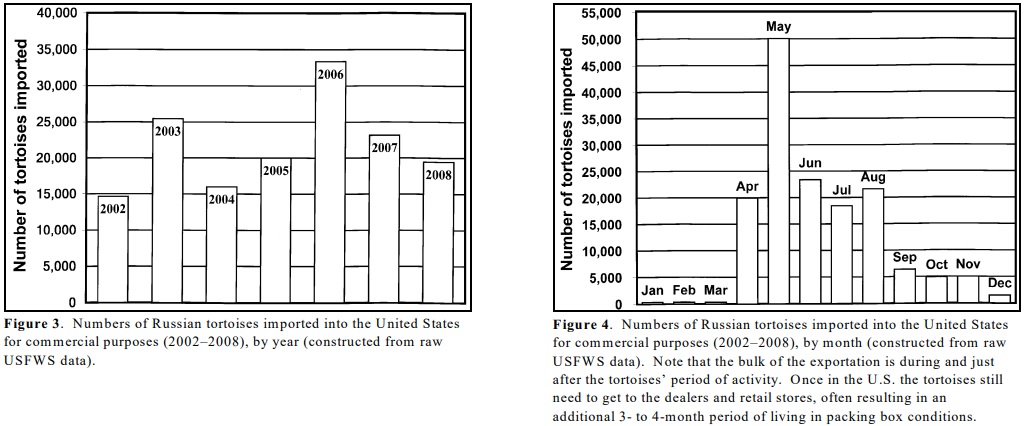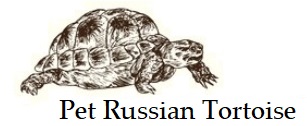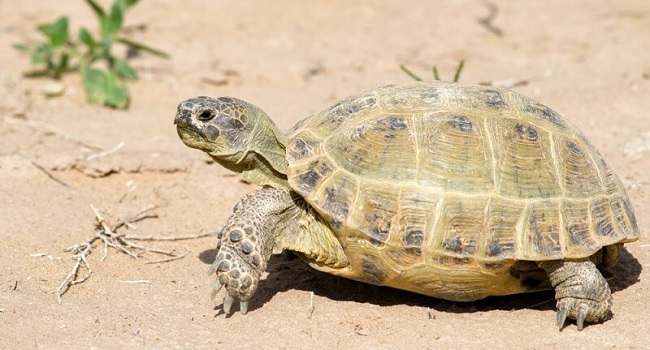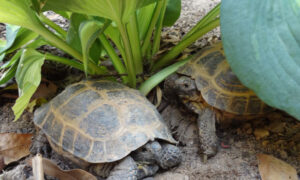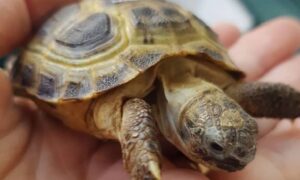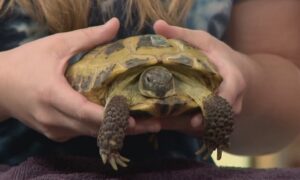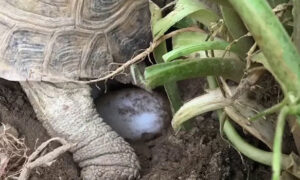Russian tortoises are one of five of the Mediterranean tortoise species that include Greek tortoise, Hermann’s tortoise, Marginated tortoise and the Egyptian tortoise species. The Russian tortoise is the easternmost of all five species.
Russian tortoise natural habitat is in southeastern Russia, Azerbaijan, southern Kazakhstan, Kyrgyzstan, Tajikistan, Turkmenistan, Uzbekistan, Iran, Afghanistan, northwestern China and Pakistan. Although, found in different parts of many different countries, Russian tortoises are most common to eastern Iran, northwestern Pakistan and Afghanistan.
The native habitat of Russian tortoises is going to range from grassland areas, savannahs and deserts. The Russian tortoise natural habitat is typically barren with little vegetation. Russian tortoises often make their burrows near springs and brooks where vegetation is relatively abundant in comparison to other areas.
Russian Tortoise Native Climate
The weather in the native habitat is often harsh. During the summer months, the weather averages in the mid- to upper-90’s °F. During the winter months, the weather averages in the upper 20’s °F to lower 30’s °F.
Russian tortoises dig burrows that are usually 30-78″ deep with a widen chamber at the end to turn around. They use their burrows to escape the weather extremes, often staying in their burrows for months at a time.
Due to the native environment and weather, Russian tortoises are typically only active about three months of the year. They hibernate the bulk of the year.
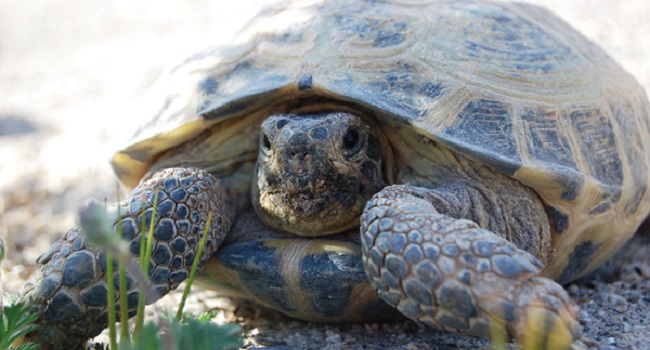
Wild Russian Tortoises
Wild Russian tortoises are currently classified as vulnerable on the IUCN Red List of Endangered Species. There are several factors that play a role in wild Russian tortoise populations.
One of the biggest threats is habitat loss, which is actually the biggest threat to nearly all turtles and tortoises. In addition to habitat loss, other threats to wild Russian tortoises include the pet trade, overconsumption for food and holistic medicines, pollution, invasive species and climate changes. Most of these are fairly common causes of wild population declines for many tortoises, as well as other animals.
There have been a few studies on wild Russian tortoises in their natural habitat. However, the studies from Kazakhstan appear to be the most complete. Looking at the numbers, you can see the change in population of wild Russian tortoises in the area.
In the 1950s, wild populations ranged from 5 – 72 tortoises per hectare (2.47 acres). However, in the 1970s, populations ranged from 0.2 – 29 tortoises per 2.47 acres.
Due to the low numbers, the researcher, Kubykin, recommended to set limits on human harvesting for the international pet trade. By the 1980s, limits were implemented. This created an increase in wild populations, by the 2000s, with about 3.9 – 10.3 tortoises per 2.47 acres.
Imported Russian Tortoises
Since the 1970s, well over one million Russian tortoises have been imported into the United States alone. And unfortunately, most end up in large chain pet stores with a small percentage of those animals surviving through adulthood and old age.
In the 1980s, limits were set, reducing how many tortoises could be removed for the international pet market. That does not mean importation stopped. It means, people were likely taking smaller tortoises, leaving adults in the wild to mate and reproduce. Previously, importers often grabbed larger tortoises that measured 4 inches or larger, which removed many breeding-age tortoises from their native habitats. Therefore leaving the larger tortoises, the wild populations could increase in numbers due breeding.
